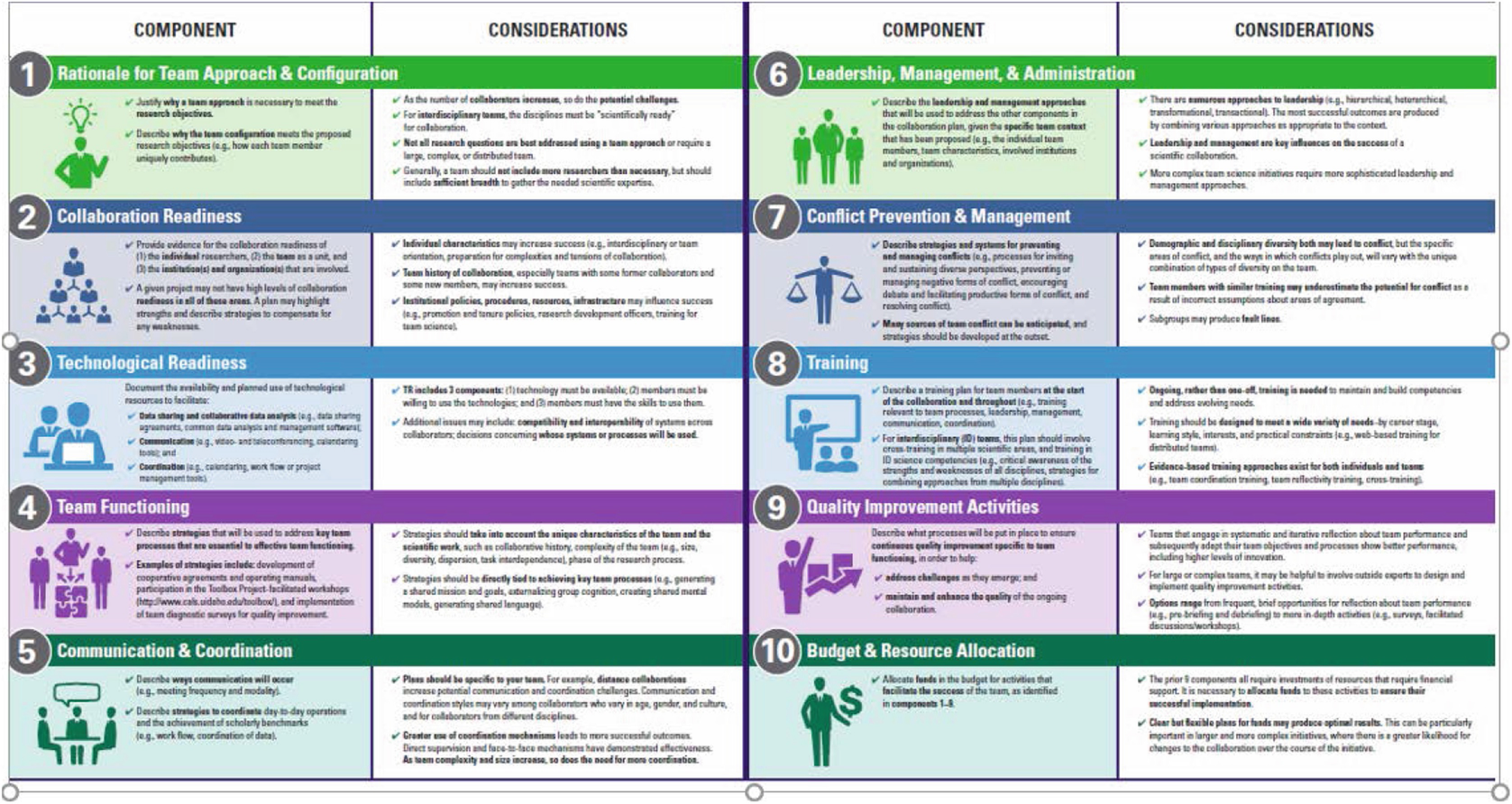This resource first appeared in issue #75 on 22 May 2021 and has tags Working With A Research Community: Working across institutions
Collaboration and Team Science: A Field Guide - L. Michelle Bennett, Howard Gadlin, Christophe Marchand, NIH National Cancer Institute
Comprehensive Collaboration Plans: Practical Considerations Spanning Across Individual Collaborators to Institutional Supports - Kara L. Hall, Amanda L. Vogel, Kevin Crowston, Strategies for Team Science Success
Operationalization, implementation, and evaluation of Collaboration Planning: A pilot interventional study of nascent translational teams - Betsy Rolland et al., Journal of Clinical and Translational Science
Research computing and data work is inherently interdisciplinary; we often bring our computing and data skills to one other team with domain expertise in some discipline that needs our help, and frequently we are part of even larger collaborations.
But managing a single team all with the same employer and goals is challenging enough. Shepherding a cross-institution cross-discipline effort is like playing the game of management on its hardest setting.
And that means that the same approaches - being explicit and intentional about expectations, giving feedback, making sure you’re getting input from everyone, planning, and communicating those plans. In the NIH NCI field guide, Bennet, Gadlin, and Marchand have sections on topics that come up routinely in this newsletter in the single-team context:
The field book is a pretty comprehensive ebook with case studies about things working well and not in each area.
In “Comprehensive Collaboration Plans”, Hall, Vogel, and Crowston suggest (with citations) what areas should be covered in an explicit collaboration plan, as outlined below.

Finally, in “Operationalization, implementation, and evaluation of Collaboration Planning”, Rolland et al. offer advice from having thirteen new interdisciplinary collaborations go through facilitated sessions for doing such planning. They found that different teams needed different parts of the planning more than others, and that topics that the teams needed additional guidance were around information and data management, and more specific guidance around authorship policies and conflict management, but were broadly pleased with the results.
Obviously not every collaboration requires explicit, ten-section collaboration plan documents. But having given some thought to each of these areas, making sure there’s agreement about the items that are relevant to your collaboration early on, and keeping lines of communication open for the duration can help collaborations just as they help with individual teams.